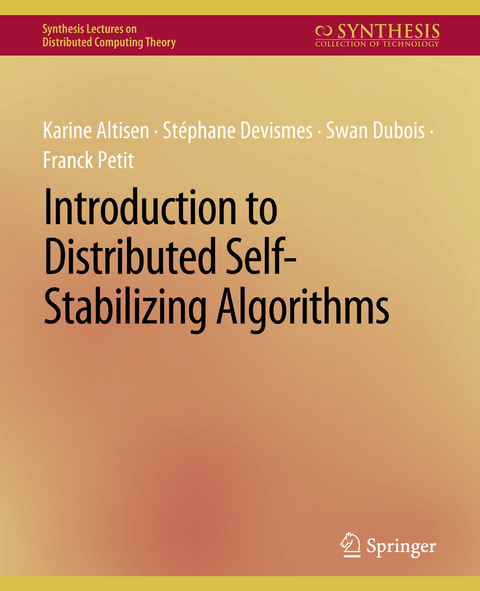
Introduction to Distributed Self-Stabilizing Algorithms
Springer International Publishing (Verlag)
978-3-031-00885-6 (ISBN)
Karine Altisen is an associate professor at Grenoble-INP/Ensimag (France). She has been a member of the VERIMAG Laboratory since 1998 and obtained a Ph.D. in 2001. Her current research area combines formal methods and distributed computing. She is interested in theoretical and algorithmic aspects of fault-tolerant distributed systems, including their certification.Stephane Devismesis an associate professor at Universite Grenoble Alpes (France). Since 2008 he has been a member of the Synchronous Team of the VERIMAG Laboratory. He received his Ph.D. in 2006 from the University of Picardie Jules Verne (Amiens, France). In 2007, he spent one year as a post-doctoral fellow at CNRS/Universite Paris-Sud. He carries out broad research in theoretical issues of distributed fault-tolerant computing, especially related to self-stabilization.Swan Dubois received a Ph.D. in December 2011 from INRIA and UPMC Sorbonne Universites (Paris, France). He spent one year as a post-doctoral fellow at EPFL (Lausanne, Switzerland). He currently holds an associate professor position at Sorbonne University (formerly University Pierre and Marie Curie). His research domain covers the whole area of fault tolerance in distributed systems with a particular interest for self-stabilization and dynamic systems.Franck Petit received a Ph.D. in Computer Science in 1998. He spent more than ten years in the industry in various positions in Computer Science. He joined the University of Picardie Jules Verne (Amiens, France) as an associate professor in 1998. In 2004, he became a professor in the same university. After one year as a visiting researcher with INRIA LIP/ENS Lyon in 2008, he joined Sorbonne University (formerly University Pierre and Marie Curie), with LiP6 in 2009. His research focuses on algorithmic aspects of synchronization, stabilization, and fault tolerance in distributed systems. He also works in the area of networks of mobile robots.
Preface.- Acknowledgments.- Introduction.- Preliminaries.- Coloring under a Locally Central Unfair Daemon.- Synchronous Unison.- BFS Spanning Tree Under a Distributed Unfair Daemon.- Dijkstra's Token Ring.- Hierarchical Collateral Composition.- Self-Stabilization in Message Passing Systems.- Bibliography.- Authors' Biographies.- Index.
| Erscheinungsdatum | 06.06.2022 |
|---|---|
| Reihe/Serie | Synthesis Lectures on Distributed Computing Theory |
| Zusatzinfo | XVII, 147 p. |
| Verlagsort | Cham |
| Sprache | englisch |
| Maße | 191 x 235 mm |
| Gewicht | 329 g |
| Themenwelt | Informatik ► Theorie / Studium ► Algorithmen |
| Informatik ► Theorie / Studium ► Kryptologie | |
| ISBN-10 | 3-031-00885-5 / 3031008855 |
| ISBN-13 | 978-3-031-00885-6 / 9783031008856 |
| Zustand | Neuware |
| Haben Sie eine Frage zum Produkt? |
aus dem Bereich


